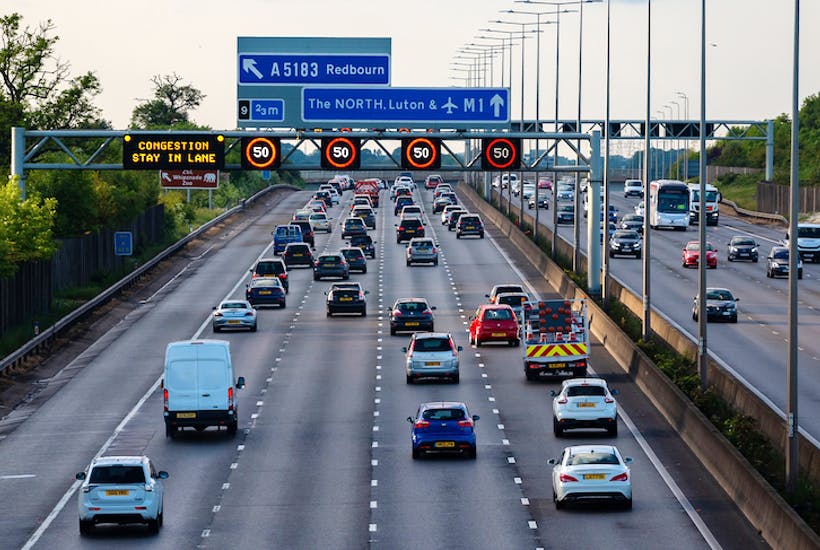How nice to hear Sir Mike Penning, chairman of something called the all-party parliamentary group for Roadside Rescue and Recovery, condemn ‘smart’ motorways as the death traps they are. The motorways use a variety of ‘smart’ methods to vary traffic flow, including part-time hard shoulders managed from a central control room and enforced using electronic motorway signs. Some smart motorways have no hard shoulder at all. This relatively new innovation was described by Penning’s group as a ‘public policy failure’ that has been introduced with a ‘shocking degree of carelessness’. In the past five years, 38 people have been killed on these stretches of motorway – which are so ‘smart’ that it takes CCTV operators an average of 17 minutes to spot when a vehicle has broken down in a live traffic lane.
What a wise fellow Penning sounds. If only we had more of his sort in government, making the decisions. Er, just the one problem. Sir Mike has already been roads minister. In fact, he was the minister who in 2010 approved the construction of these very roads. But it isn’t his fault, you’ll understand. He says he was hoodwinked by the Highways Agency which befuddled him with the results of a trial on the M42. ‘The rescue areas were 500 meters apart, and the risk assessment suggested it was safe and worth trying. We were in a difficult financial situation, and it seemed to make logical sense to use the assets we had rather than build new roads,’ he says by way of excusing his decision.
It is true that, since that M42 trial, the spacing between emergency refuges on many ‘smart’ motorways has been increased from half a mile to a mile and a half, but even so it was surely not beyond his imagination in 2010 to have foreseen what would happen. Half a mile is still a pretty long way to nurse a vehicle that has suddenly lost power – or, as once happened to me, whose windscreen wipers suddenly fail during heavy rain. Just what is the point in us electing MPs if they are not going to ask officials the difficult questions, use their common sense to judge when a policy is likely to end disastrously?
Penning’s decision in 2010 to allow ‘smart’ motorways is all too typical of roads policies over the years. On aviation and rail travel no expense is spared when it comes to safety. But when it comes to roads, governments start penny-pinching in the most ridiculous ways. We are still building dual carriageways with dangerous crossover junctions, where vehicles turning right has to cross two lanes of fast-moving traffic. We are still building them with roundabouts rather than proper, grade-separated junctions. We are still building roads without a separate footway-cycleway, when the extra cost of doing so would be minimal as a percentage of the overall cost of the project.
Smart motorways don’t even save all that much money. You would think that turning the hard shoulder into an extra lane wouldn’t cost much more than a few tins of white paint. But no, huge sums have been swallowed up in these projects even though they involve no extra tarmac and no new earthworks. The original M42 ‘smart’ motorway conversion involved turning the hard shoulder into a fourth running lane and cost £9 million per mile when built in 2008. A project to widen the M27 properly around the same time cost £16 million per mile.
It is as if a builder had come round and told us that it would cost £16,000 to extend our house properly, with solid foundations, brick walls, tiled roof and central heating and all mod cons – or we could, if we preferred, turn the garden shed into an extra bedroom for £9000. Is there anyone – other than Sir Mike Penning perhaps – who would accept the latter quote?







Comments